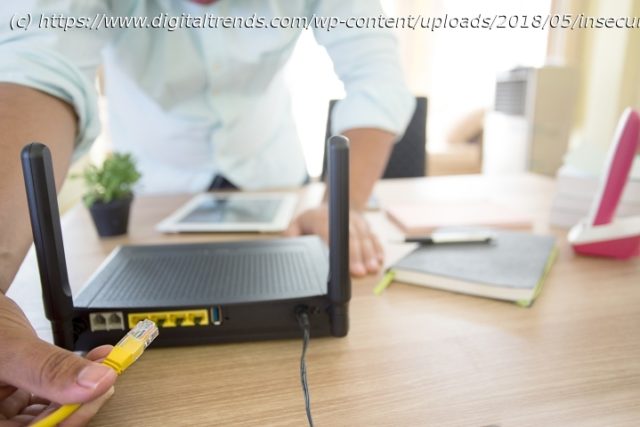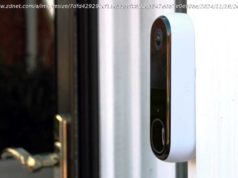If your Wi-Fi is running slow or just drops out altogether in certain rooms, here are solutions to all your Wi-Fi problems.
Wi-Fi problems can strike anyone at any time, no matter how much networking experience you have. But if you’ve not come across a particular Wi-Fi issue before, there’s no harm in not knowing how to fix it. All you need are the right tools and a few tips, and you’ll be able to solve your Wi-Fi problem in no time.
Whether you’re experiencing problems with slow internet, Wi-Fi signal dropping, or you just can’t connect to Wi-Fi at all, here are some of the quickest and easiest fixes you can try; as well as some advanced advice for more troubling issues that would definitely result in your Wi-Fi not working at all, or at slower speeds.Slow or n Wi-Fi o internet access in certain rooms
Wi-Fi is made up of radio waves, meaning your Wi-Fi router broadcasts in all directions from a central location. If your router is in a far corner of your house, then you’re covering a great deal of the outside world unnecessarily. If you can, move your router to a more centralized location. The closer you can put your router to the center of your coverage area, the better reception will be throughout your home.
If you have external antennas, you can try adjusting those, too. Alternating between fully vertical and fully horizontal positions can help it reach in multiple directions.
If you live in an apartment building, other routers might be interfering with yours. Free software, like NetSpot on Mac, Windows, and Android, or Wi-Fi Analyzer for Android, can show you every wireless network nearby and what channel they’re using. If your router overlaps with nearby networks in particular rooms, consider switching to a less congested channel. If you need help switching, here’s our guide on how to change your Wi-Fi channel.
If none of that helps, your home might be too much for one router to handle. Consider purchasing a wireless repeater or setting up an old router to serve as one to extend the range of your main router. Upgrading to a whole-home mesh wireless system can also help with dead spots in certain areas of your home. Either way, it might be time to go and buy a new router.Slow internet everywhere
If your Wi-Fi speed is slow no matter where you are, try plugging a laptop into your router directly and test your internet speed using one of the best internet speed tests. If speeds are still down, the problem is likely with your internet connection, not your router. Try some of these ways to improve your internet speed and contact your ISP.
If that’s not the issue, it could be that your current wireless channel is overcrowded by your devices or by those of other nearby networks. Consider changing the channel on your router in your router settings, by accessing the admin settings.
If that doesn’t help, performing a factory reset on your router and setting it up again may help. On most routers, there’s a Reset button that you can hold down with a paperclip. Do so for 30 seconds, and the router should default to factory settings. Use our guide to setting up a wireless router to get everything properly configured, and see if that helps.
If none of that works and your internet is fine on a wired connection, your router might be dying. Consider buying a new one: Here are the best routers we’ve reviewed and why they’re great picks. If the router seems fine, then it might instead be your modem, which could suffer connectivity issues if it’s on its way out, too. If you’re looking to upgrade your modem as a fix, we also have a guide on some of the top modem-router combos. Upgrading to a Wi-Fi 6 or Wi-Fi 6E router can also help ease issues with congestion and support faster speeds, provided that your broadband plan is capable of these boosted speeds.One device can’t connect to the Wi-Fi
Sometimes you run into a Wi-Fi issue with one particular device. It’s probably just a momentary network issue, which is an easy fix. Try turning off the Wi-Fi on your device, then re-enabling it — or unplugging and replugging your Wi-Fi dongle. If that doesn’t work, restart the device and try again. Then try restarting the router itself.
If that doesn’t help, or if the problem reoccurs, consider deleting your current network from the list of saved networks on your device, then reconnect again.
If you’re running Windows 10 or 11, search for “wifi troubleshooting” and open the result, which should be Identify and Repair Network Issues. That will go through a series of diagnostics that may restore connectivity. On MacOS, you can run Wireless Diagnostics. Hold the Options key and click the AirPort (Wi-Fi) icon on the menu bar. Find Open Wireless Diagnostics, and then follow the on-screen instructions.Nothing can connect to Wi-Fi
If you can’t connect to your Wi-Fi at all, plug your laptop into the router directly using an Ethernet cable, and see if you can connect that way. The particular type of Ethernet cable doesn’t matter, but there are some Ethernet cables that are better than others. If that works, your Wi-Fi is the problem and you should try some of the other fixes listed here. If it doesn’t work, then your internet may be down altogether. Check your ISP’s webpage and social accounts, or give them a call to see if they are reporting problems. Sometimes providers can be a little slow to note issues, so you can also check with a monitoring site like Downdetector and see if other users in your region are reporting problems.
Resetting your router can fix a myriad of issues, too, and an inability to connect is one of them. Press the Reset button on the back of the router with a paperclip for 30 seconds, and the router should default to factory settings. Use our guide to setting up a wireless router to get everything properly configured.
If that’s no use, you may need to consider buying a new router.Connections drop at random times
Is there some sort of pattern? Do connections drop whenever you use the microwave? Have you just installed a fish tank? It may sound weird, but some routers have trouble with these and other home hardware. The 2.5GHz band is readily interfered with by other devices, and 5GHz and 6GHz are notorious for being interrupted by physical objects. It could also be that you’re experiencing interference from other networks or devices. If your neighbors are heavy Wi-Fi users at a particular time each day, this could be slowing you down.
Changing your router’s channel might help. You can use NetSpot on Mac and Windows and Wi-Fi Analyzer for Android to show you every wireless network nearby. If yours overlaps with nearby networks, switching to a less congested channel in your router settings can help. We have a guide that will walk you through changing the channel on your router.
You can also try moving your router to a more accessible location so that there’s less distance (and interfering devices) between you and the router.






